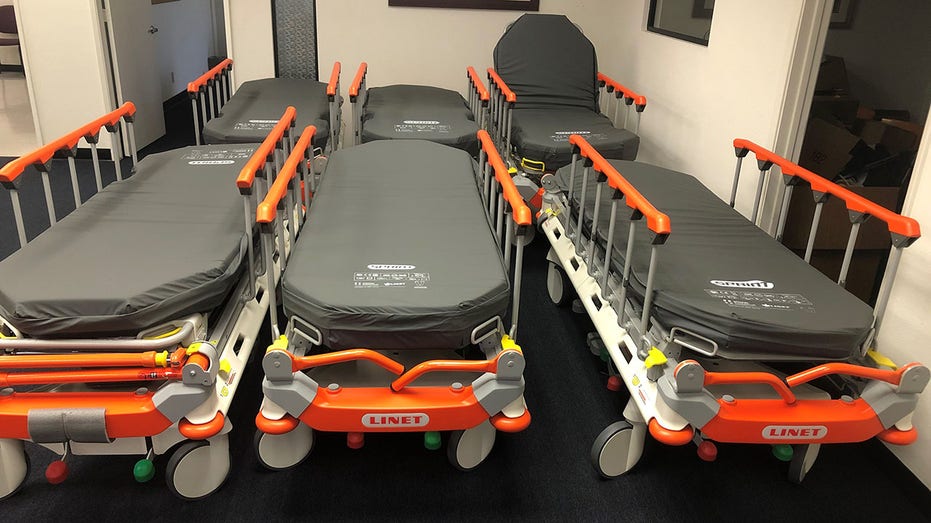Older, more tenured people are increasingly quitting their jobs.By Rani Molla@ranimolla Apr 30, 2022, 8:00am EDT
With prices soaring and analysts predicting a recession on the horizon, it might not seem like the best time to quit your job. But that’s not keeping American workers, especially older, more tenured ones, from doing so.
Higher-paid workers are increasingly quitting their jobs, as the Great Resignation — also known as the Great Reshuffle — enters its second year. Earlier in the pandemic, the trend was led by younger, less-tenured workers in low-paying industries like retail, food service, and health care. Now, the main growth in quit rates is coming from older, more tenured workers in higher-paid industries like finance, tech, and other knowledge worker fields, according to data from two separate human resources and analytics companies. These workers say they are searching for less tangible benefits like meaning and flexibility.
That changing composition of who is quitting paints an increasingly complicated picture of the state of work in America and suggests that while quit rates have decreased slightly from their highs last year, the phenomenon is not going away just yet.
“The Great Resignation is almost like a train, where it’s built all this momentum and it’s hard to slow down, but certain workers are getting off the train and new workers are coming on,” said Luke Pardue, an economist at Gusto, which provides payroll, benefits, and human resource management software to small- and medium-sized businesses.
Rates of quits are always highest among younger, less senior workers — those who tend to be less invested in their jobs and whose lives are less stable. This was true during the early stages of the pandemic when these workers quit their jobs amid heightened demand to eke out better wages and conditions elsewhere (though those gains are unlikely to be permanent). But those quit rates have been declining. Data from Gusto, which typically works with companies that have around 25 employees, shows that the average tenure of people who quit has grown in every age group and in nearly every industry. In other words, older people who’ve worked at a job longer are also quitting.
A similar change is happening at bigger companies, according to data from people analytics provider Visier.https://datawrapper.dwcdn.net/ceS03/1/https://datawrapper.dwcdn.net/yDfl6/1/
Between the first quarter of 2021 and 2022, the greatest growth in resignations was among people aged 40 to 60 and those with a tenure of more than 10 years, a Visier dataset from companies with over 1,000 employees shows. Older and more tenured people are especially likely to be quitting in knowledge worker industries like finance and tech.
Their reasons are myriad.
“Don’t look for one thing that’s driving the Great Resignation,” Ian Cook, Visier’s vice president of people analytics, told Recode. “It’s actually made up from a combination of different patterns and will continue to change as the labor market changes and as the economic recovery changes.”
Among the more financially stable set, quits are being driven by everything from a desire to continue working remotely to a greater search for meaning to simply having the means to do so.
Columbia Business School professor Adam Galinsky calls this iteration of the Great Resignation the “great midlife crisis.”
“At the midpoint of life, we become aware of our own mortality, and it allows us to reflect on what really matters to us,” said Galinsky. The pandemic has amplified that effect. “A global pandemic obviously makes people reflect on their own mortality in terms of being afraid of dying themselves or having a loved one or family and colleagues pass away.”
Importantly, the people who quit to hold out for the jobs they want or forgo work entirely are usually the ones with the financial means to do so.
Galinsky, who is currently on sabbatical in Hawaii, says he’s seen it among his peers and among other high-earning knowledge workers now working from his island getaway. He mentioned a Bloomberg employee who quit after the finance publication called workers back to the office and who now works on a pasta truck.
Such workers, either due to savings or a spouse’s income, have the freedom to look for other work, including gig work or starting their own business. A Gusto survey of new businesses shows that they’ve shifted from e-commerce startups earlier in the pandemic to more professional services, like, say, an accountant starting her own firm rather than working for someone else.
Many of these workers, especially those who are older and more stable in their careers, now have the perspective to consider what they really want out of their lives and work.
After more than two years of successfully working from home, many knowledge workers are loath to come back to the office, and some are jumping ship if they feel they have to do so. That makes sense. Data from Slack’s ongoing survey of 10,000 knowledge workers just found that with a third of them now back in the office five days a week, their work-related stress and anxiety has reached its highest level since the survey began in 2020.
Growth in knowledge worker quits also might just simply be a case of people copying one another.
“Workers who have this experience, that switched a job, that became more flexible, talk about it and how they had a great experience, and that leads their neighbor or their friend to do the same,” Pardue said.
They’re also quitting because there are a lot of jobs out there for them. The number of business and professional services job openings is at a record high, according to Bureau of Labor Statistics data. According to job site Indeed, the number of high-paid job postings has not cooled as much as postings for low-paid jobs (postings for both remain above pre-pandemic levels).
So while the future might look grim, the present looks just fine for these workers, who are confident in the current tight job market. As Galinsky put it, “People believe less in global warming on days it snows.”
Older workers in higher-paid industries are joining the Great Resignation – Vox



